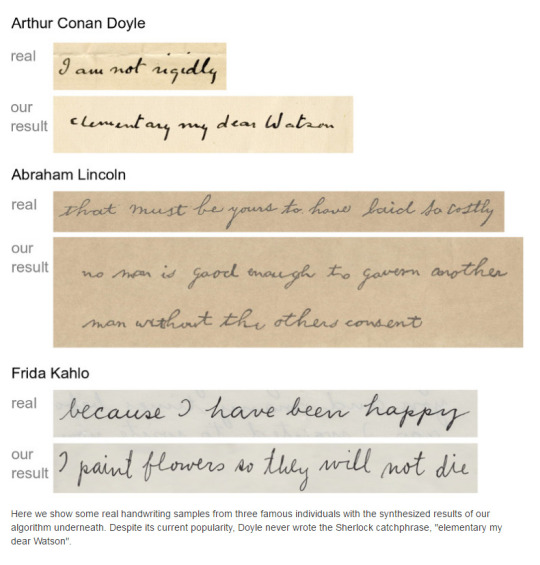My Text in Your Handwriting
Here’s an exciting-but-cyberpunk-creepy research project.
Tom S.F. Haines, Oisin Mac Aodha, and Gabriel J. Brostow have built a system to imitate handwritten messages. It takes a handwriting sample, and outputs a result that looks convincingly like the handwriting of the original writer.

This is really cool, because there’s a bunch of fun artistic things you can do with handwritten text. Imagine playing a biographical game about Abraham Lincoln, with the text in Lincoln’s own handwriting.
It’s also really creepy because it further transgresses our expectations for what is real. While technical limitations make it hard to use for original-document forgeries–inkjet printers turn out to be terrible for imitating even cheap pens–much of the time we’re only dealing with an image of an image anyway. Unless you’re a scholar working with primary sources, you’ve probably gotten used to treating an image of a thing as the thing itself.
Not perfectly, of course. You know what the Mona Lisa looks like, but you’d probably agree that seeing it in person is still slightly different. But there’s technology that can alter images, and has been since the invention of photography. For less well known images, how certain are you that you know what the original looks like?
(For that matter, given the crush of people who try to observe the Mona Lisa through its bulletproof glass, how many of them have really gotten a good look at it lately?)
Handwriting has photography’s associations with authenticity, but it also has a veneer of pre-industrial non-reproducibility. When handwritten greeting cards can be mass produced and customized exactly to the recipient, will we still feel the same way about handwriting?
The code is on GitHub, though it’s a bit finicky: https://github.com/thaines/helit/tree/master/handwriting
